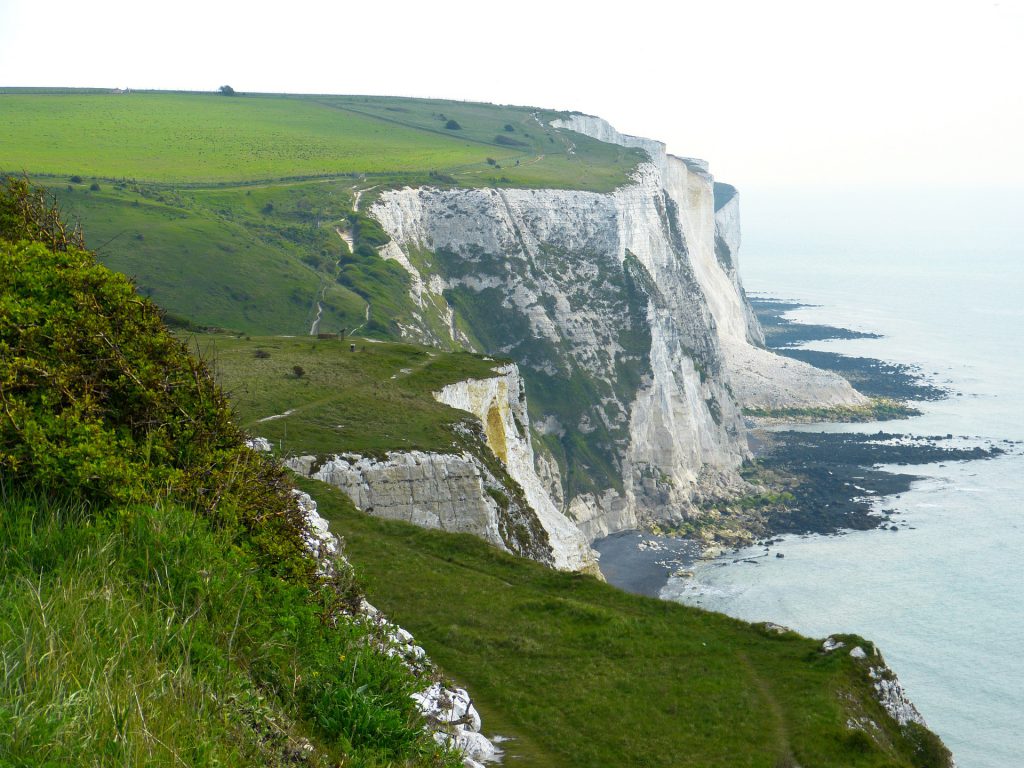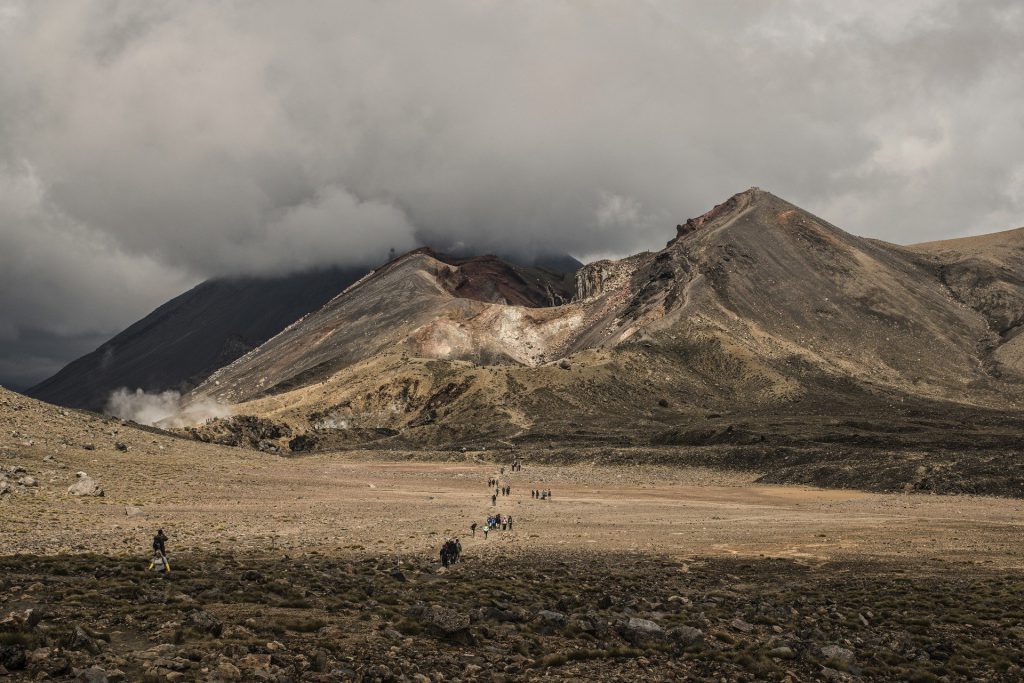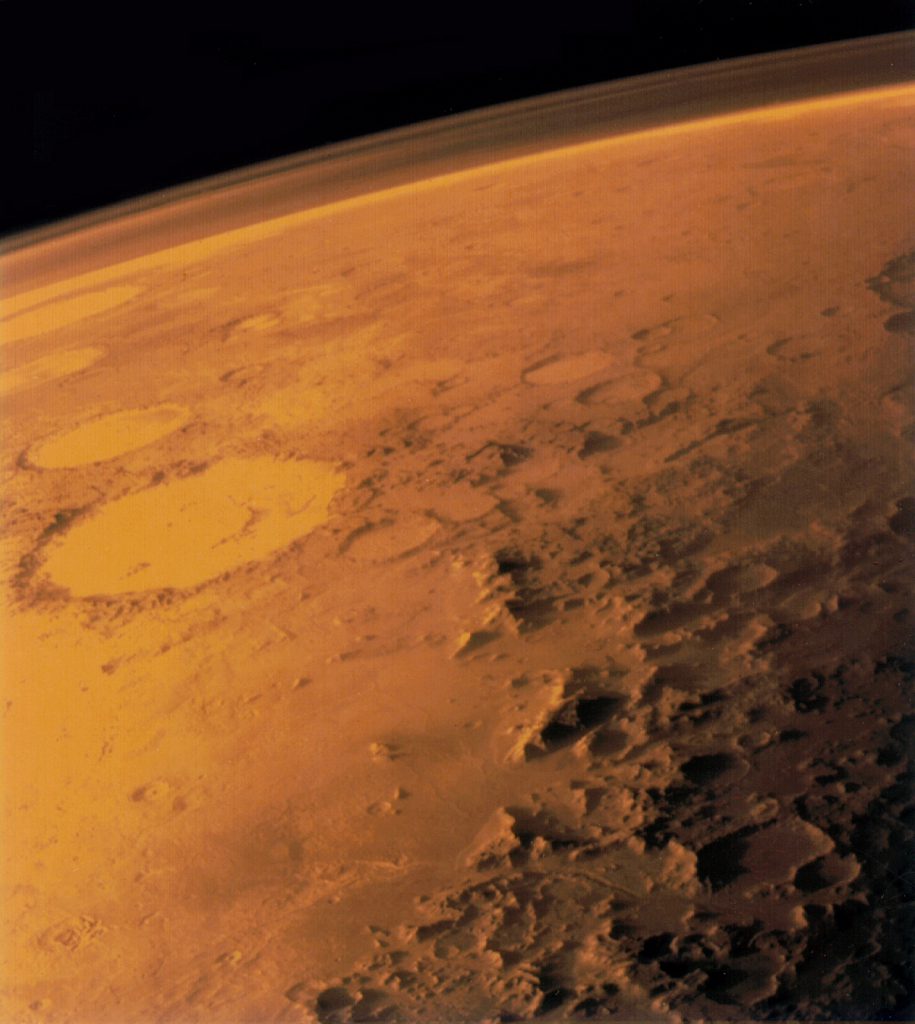Would you like to talk to rocks?
By: Danna Camila Jaimes
Have you ever wondered if rocks have the ability to speak? Have you ever tried to understand what they are telling you? You probably think that this is a task that only concerns geologists or people who have advanced knowledge on the subject, but today I will give you basic information so that you can understand any rock that you find in your environment, if you wish.
What are rocks made of?
To begin with, rocks, like people, have different physical and chemical characteristics that depend directly on their place of origin and the conditions under which they were generated; since this will define the chemical components that will form the rock and that will give rise to the minerals that form it. In fact, the minerals have classifications too and they can be differentiated from each other by their physical and chemical characteristics. The Mohs Scale, for example, classifies minerals according to their hardness. Another example is fracture or cleavage, which refers to the way the mineral breaks when it is physically impacted and responds to the mineral’s weak surfaces. There are also classifications according to their chemical composition; for instance, we can say that silicates (minerals with SiO4 in their structure) are the most abundant on the surface.
This diversity in nature (which is obviously not exclusive to humanity) makes the description of different rocks and their characteristics vary substantially, so it could be said that similar to how people speak different languages (English, Spanish, French, etc.) according to their place of origin, rocks are also expressed in different ways according to their origin and classification, since the characteristics that predominate the rock being analyzed will depend on this.
Understanding Sedimentary Rocks
Get ready, because you are about to learn the first language and probably the most important of all, the language of sedimentary rocks. These rocks are the most abundant on the planet, covering 66% of the Earth’s surface (Mibei, 2014). Sedimentary rocks are normally formed by physical processes, such as the deposition of material on the Earth’s surface or in water through the wear of pre-existing rocks or erosion, through different erosive agents such as water and air, or by processes such as evaporation or precipitation of fluids.

To recognize them, it is enough to know that these rocks normally present a layered appearance, which is specifically known as stratification where the oldest rocks are located in the lower part of the succession, this is known as the Law of Superposition. Another important aspect is the size of the grains, because when they are deposited in a low-energy environment, the grain size tends to be quite small, while when the environment has high energy, heavier materials are deposited. Is there a scale to measure grain size more accurately? Yes of course! In fact, the classification according to their grain size is most commonly used for detrital type rocks, that is, rocks generated by the transport of wear material from other pre-existing rocks by physical processes. In this classification the rocks can be claystones (<0.002 mm); mudstones (<0.063 mm); sandstones (<2mm) or gravel (> 2mm) according to their grain size as long as the rocks are consolidated, that is, they must have undergone a diagenesis or compaction process.
However, if the rock presents structures of biological origin (that is, the product of biological phenomena such as the action of microorganisms) or if it presents products of chemical precipitation by processes such as evaporation, another classification is necessary where what matters most is the main process that gave rise to the rock.
Understanding Igneous Rocks

Igneous rocks are another important type of rock, since they are the second most abundant on the planet’s surface and are formed through the solidification and cooling of magma. Magma is, simply put, molten rock. This magma can be generated by the partial fusion of pre-existing rocks inside the earth, and it can come from different depths of the planet, therefore the composition of the rocks generated will depend directly on the rock from which the magma comes. Normally, this fusion is produced by changes in pressure, in temperature, in the composition of the magma (Mibei, 2014) or a combination of the above processes.
These rocks are mainly classified into two groups according to the place on the planet where the rock is formed or crystallized: intrusive or plutonic rocks, which refers to the rocks that solidify under the earth’s crust; and volcanic or extrusive rocks, which are the rocks that are formed by the cooling of lava on the planet’s surface. It is important to clarify that intrusive rocks can be found on the surface of the planet despite having crystallized inside it, since they can be raised to the top by means of tectonic forces. An easy way to identify these rocks is that unlike sedimentary rocks they do not present any stratification and unlike metamorphic rocks they do not present foliation.
Understanding Metamorphic Rocks
The last major group of rocks to mention are the metamorphic rocks. These rocks are peculiar, since they undergo changes due to the fact that they experience conditions of temperature and pressure higher than those of diagenesis (compaction of sedimentary rocks) and lower than those of igneous rocks. In this case, there are multiple classifications again. First, you should consider that these rocks come from the alteration of a pre-existing rock, which is known as a protolith, and according to the level of metamorphism there is a change in the minerals and the texture of the rocks. Therefore, the greater the metamorphism, the greater the modification of the characteristics of the initial rock, making it more difficult to identify the protolith. Another important characteristic is that changes in mineral assemblages are directly related to changes in temperature and pressure in metamorphism; therefore, they are used as indicators of the type of metamorphism and this classification is specifically known as metamorphic facies. Finally, metamorphic rocks are easily recognizable because the minerals are oriented in preferential directions, generating something known as “foliation”.
Everything Changes: The Rock Cycle
If you have been attentive throughout the article, you probably noticed that the word “change” is repeated a lot and that rocks are generated from other rocks (Cassan, 2008). Just as throughout life you grow, transform, and learn new things based on your experiences; rocks change according to the geological processes that affect them. In this sense, rocks vary according to the tectonic events and other events causing changes in temperature, pressure, or exposure to water or the atmosphere. For example, if a sedimentary rock that was generated at the bottom of the ocean reaches a subduction zone (that is, a limit where an oceanic and a continental plate meets), this rock will undergo abrupt changes in temperature and pressure, changing their mineralogical composition and classification. Thus, the rock will end up being a metamorphic rock or in a more extreme case, an igneous rock. As I said before, everything will depend on the combination of phenomena to which the rock is exposed, therefore the results are practically infinite.
And The Rocks On Mars?

If you are a curious person you will probably wonder if the rocks on other planets such as Mars are similar to those on Earth, and the answer will probably not surprise you: They are similar!
But, how do we know that they are similar? According to what is described in the article, the classification of rocks and minerals is carried out in principle by the characteristics that we can observe directly, or in some cases, more advanced studies of the chemical composition of the rocks which can be carried out with different techniques. But obviously, a geologist cannot go to Mars on a field trip and bring samples to study the rocks that are there, well, at least not yet.
So how do we know what rocks exist there? The answer is technology! The various missions that have been sent to Mars have given us information about the rocks that emerge there, an example is the work carried out by Spirit and Opportunity, who were sent to look for signs that water once existed on Mars. They studied the rocks in the area and made mineralogical analyzes, focused on finding minerals that on the Earth are normally related to the presence of water, such as hematite. A more recent example is Perseverance, which was sent to Mars last year (and landed on the surface this year), and among its objectives intends to take samples of Martian rocks and soils and, with the help of another mission, return them to Earth. In short, just as you use social networks or the internet to communicate with people who are at long distances from you, humanity has used rovers and other missions to indirectly study the surfaces of other planets.
Language Changes…
Finally, it should be clarified that just as the times change and with it, the words used on a daily basis, in science words also fall into disuse or concepts change as research progresses. Therefore, I recommend that in case you are still interested in geology, you should constantly read about the subject and continue learning the basic fundamentals of geology.
Bibliography
- Cassan, F. (2008). Rocks And Minerals. Britannica Illustrated Science Library.
- Mibei, G. (2014). Presented at Short Course IX on Exploration for Geothermal Resources, INTRODUCTION TO TYPES AND CLASSIFICATION OF ROCKS. 1–12.
- The Planetary Society. Perseverance, NASA’s newest Mars rover
Danna Jaimes is a Research Associate with the BMSIS Young Scientist Program (2021) and is an undergraduate student in geology at the Faculty of Physicochemical Engineering, Universidad Industrial de Santander, Colombia.
